New partnership announced with Borderless
Sona and Borderless announce an exciting partnership.
Building a staff schedule couldn’t be easier.
Reduce payroll errors with real-time T&A.
Fill 50% more shifts with your own employees.
Ensure shifts are covered even if you're understaffed.
Manage absence requests and approvals.
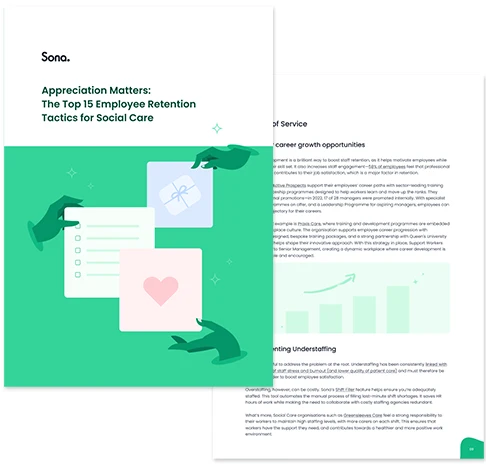
Practical ways to boost team morale with proven examples from across the sector.
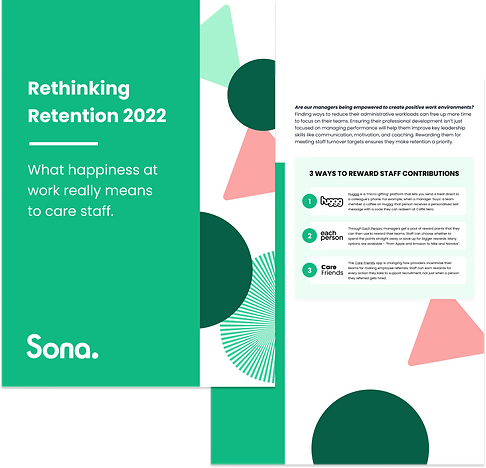
Find out what care employees say matters to them most at work.
Search and view employees with customised permission levels.
Key employment information all in one place.
Store visas, professional certifications and more with easy access.
Control personal and operational details of your staff.
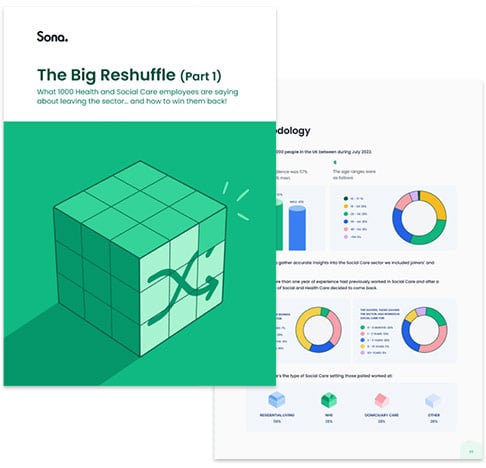
Why are people leaving Social Care, and where are they going?
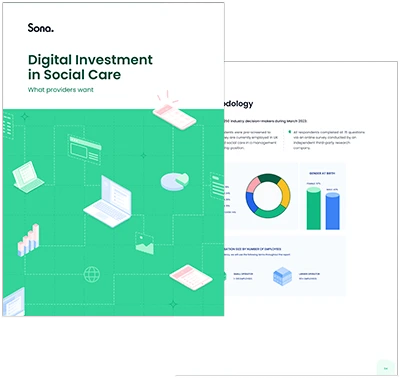
We asked 250 Social Care leaders about their attitudes towards digitisation and their plans for the next 12 months...
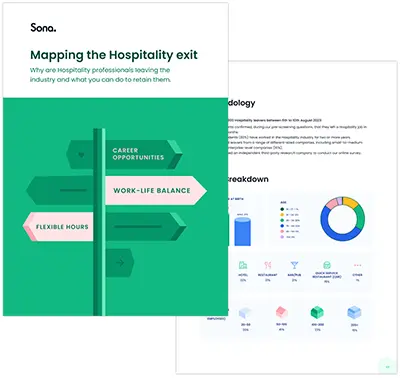
Why are Hospitality workers leaving the industry, and what can you do to retain them?
Share updates with a single click.

Staff can see relevant messages in one place.
Request post-shift feedback from staff.
Recognise staff contributions by sending them praise.
Identify staff at risk of churning.
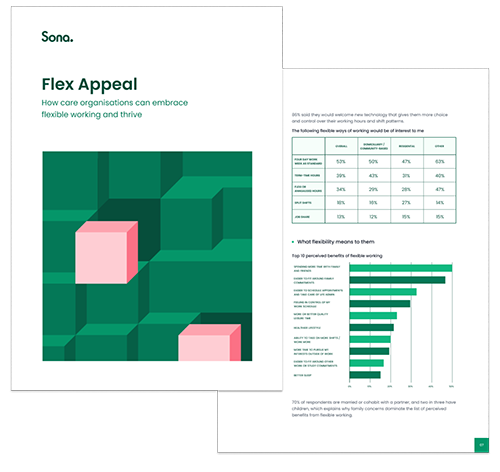
How care organisations can embrace flexible working and thrive.
Maintain quality of care and reduce costs.
Maximise profitability through AI-powered forecasting & scheduling.
Elevate your operational efficiency and guest satisfaction.
Streamline operations across sites.
Developed alongside Social Care experts with decades of combined experience.
See why we are the leading user-friendly, end-to-end platform that prioritises both efficiency and wellbeing.
The Sona Partner Network is an ecosystem of solution experts and complementary technologies.
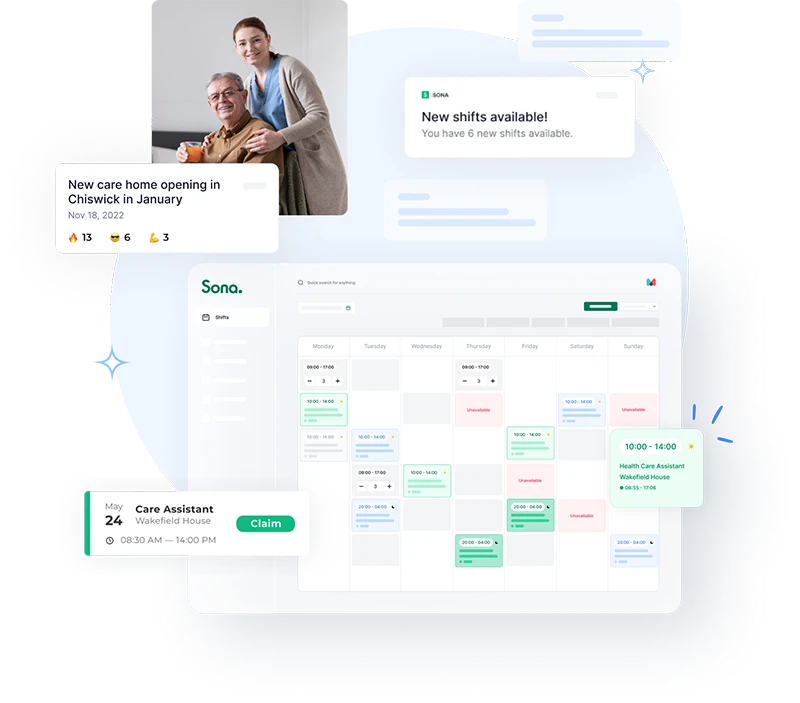
Give staff greater visibility of shifts available to work, with a simple "shift claim" process to increase their income.
Improve employee engagement and retention with a seamless employee communication platform.
Happier staff provide greater customer experiences, which in turn drives return rates, revenues and recommendations.
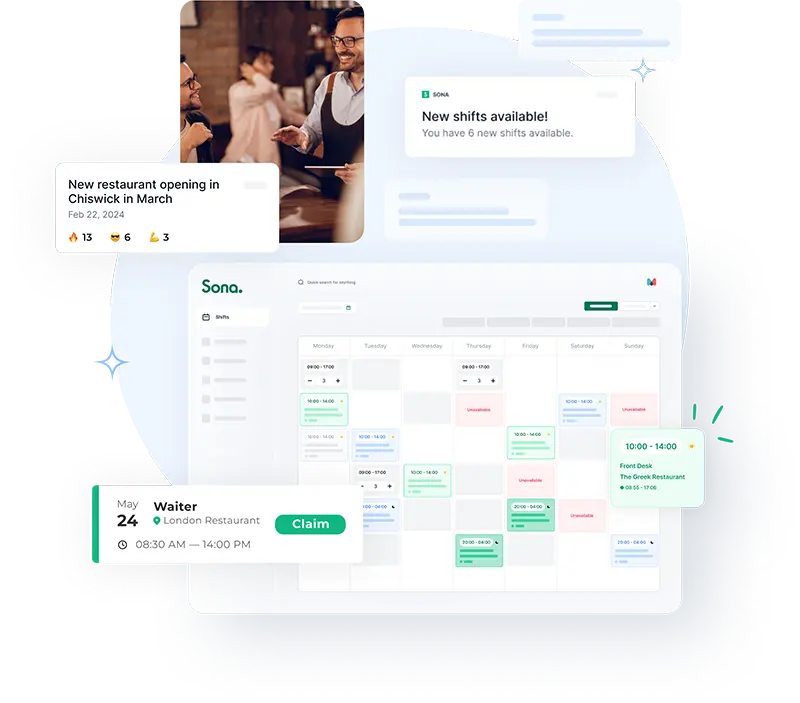
Give staff greater visibility of shifts available to work, with a simple "shift claim" process to increase their income.
Improve employee engagement and retention with a seamless employee communication platform.
Happier staff provide greater customer experiences, which in turn drives return rates, revenues and recommendations.
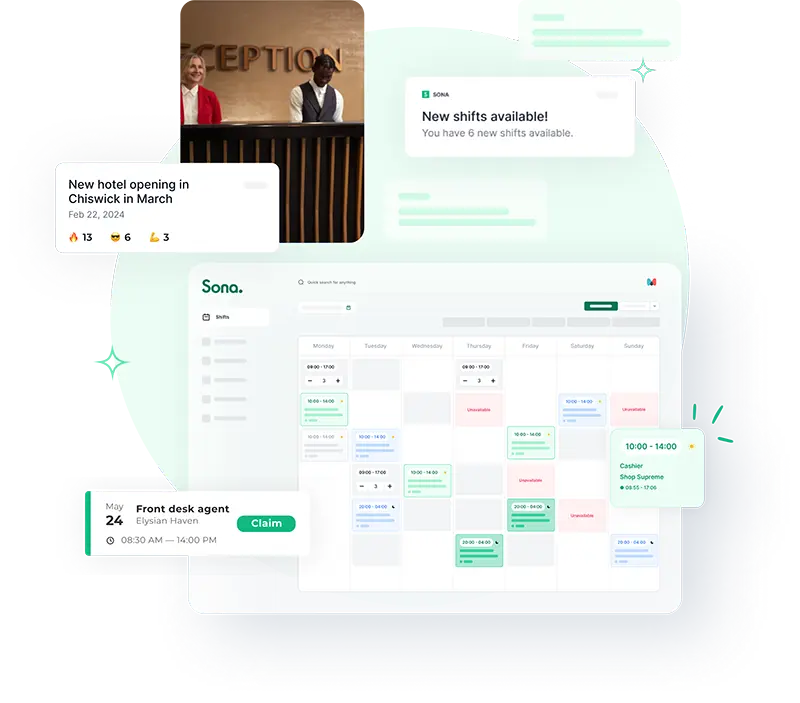
Meet the Sona team online with our webinar series or in-person at an event near you.
New research, insights, and strategies for frontline leaders.
Downloadable templates, reports and guides from Sona.
Stay up to date with the latest Sona news and research.
Learn how our customers are transforming their people operations.
| 3 min read
Sona and Borderless announce an exciting partnership.
| 2 min read
Sona and Found by Lottie announce an exciting partnership.
| 4 min read
Remove operational errors, drive efficiency, and help your team spend less time on admin with a unified solution.
PUBLISHED: February 2025
Download the report to learn how hospitality operators are embracing AI challenges and opportunities in 2025.
PUBLISHED: January 2025
Reveal the most important metrics in 2025!
PUBLISHED: December 2024
This infosheet is packed with practical insights to drive high-quality, low-regret WFM purchases.Workforce management (WFM) can seem like a daunting prospect involving lots of different processes, but the core goals are clear: efficiency, integration and communication. Learn all about WFM with this, your ultimate guide to WFM.
7 minute read
Workforce management empowers employers to strategically allocate people and resources, manage attendance and comply with employment law and other regulations to increase productivity and optimise the way companies run day-to-day operations.
Getting that process right is vital to any business, but is even more important for organisations with frontline employees who are often less connected to leadership and have traditionally had less access to company information and digital productivity tools.
Given the complexity of frontline people operations, WFM has become increasingly digitised, with a growing range of software and apps replacing paper and Excel spreadsheets.
However, workforce management systems aren’t isolated solutions, it’s more of an ongoing cycle. Once implemented, it should run continuously to ensure the optimal performance of company operations.
A complete WFM system is usually made up of seven key components:
Integrated WFM tools, like applicant tracking systems (ATS), can be extremely useful to the recruitment process–alleviating some of HRteams’ most common challenges.
They allow you to keep track of hiring stages and important documents, work out where a potential candidate’s skill set might fit in with the current workforce, and estimate the value they could bring to your organisation.
Onboarding is a critical step in successful hiring and staff retention.
It shouldn’t be about simple orientation but long-term sustainability. An effective onboarding process is all about clarity and good communication, two of the main goals of a WFM system.
With an effective system already in place, onboarding new employees becomes a much easier, less time-consuming process. A better understanding of employee output also makes it easier for employers to adjust initial training and coaching to maximise individual performance.
WFM doesn’t just give employers insight into employee engagement, but actively helps them improve it.
There are plenty of ways to increase employee engagement, but effective resource planning is a good example. WFM systems help employers match shifts tasks to an employee’s specific skill set and preferences, increasing both productivity and worker satisfaction.
WFM systems also help create an environment of self-responsibility, and the opportunity for self-development by empowering employees to have a say in how they work. Offering employees a level of control over their working lives is a sure way to boost engagement.
ICompanies with high employee engagement are 21% more profitable on average.
A comprehensive workforce management system can help employers to identify and focus on factors impacting employee performance, assessing work over a period of time.
This might include:
WFM systems also promote higher levels of staff retention, especially in high-stress work environments.
Particularly for frontline staff, streamlined scheduling and good team communication help alleviate unnecessary pressures and, ultimately, reduce staff turnover. Keeping staff churn low in health and social care systems is crucial, particularly in the face of the post-pandemic Great Resignation.
WFM software is designed to streamline, optimise, and automate many aspects of people management and people operations. .
This software usually provides all-in-one solutions for digitising administrative tasks, keeping track of employee output, and providing effective reporting.
The latest, modern WFM systems include self-scheduling features which let employees manage their shifts and days off themselves with little or no need for manager input.
Rolling out new technology to your employees can be complicated, particularly in large companies with distributed teams. However, with enough preparation, a phased approach, and constant support, it doesn’t have to be painful.
A digital platform helps keep track of your workforce, keeping your employees connected, and instantly up-to-date. Maintaining clear communication between frontline and office-based staff is a foolproof way of increasing productivity.
These features are particularly important for large organisations with time-sensitive and critical work.
Sona provides a WFM solution for health and social care workforces, trusted by more than 30,000 frontline staff.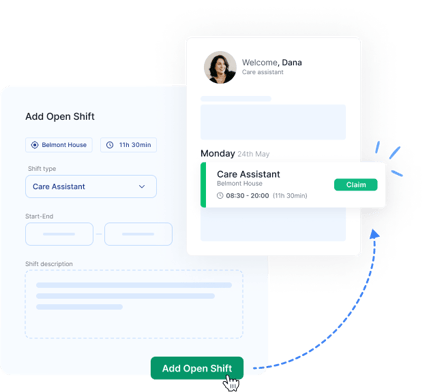
Modern WFM software like Sona should bw designed to be compatible with mobile devices, enabling instant updates and ensuring optimal coverage. Sona has an
Using dynamic templates to rapidly populate rosters and bulk-assign shifts, these platforms can offer an appealing alternative to manual shift-filling.
The benefits of cloud-based shift scheduling software are numerous: streamlined timetables and increased accessibility are making it an ever-popular option.
With self-scheduling options for employees to fill in shift preferences, staff flexibility is vastly improved, as well as employee satisfaction.
With the platform’s specific working-time framework, employees are given more freedom to choose when they work.
With digitised data and real-time visibility into scheduling and attendance, managers can intercept potential issues before they become real problems. The data can also be used for KPI reports which examine workforce performance.
With manual systems, it’s difficult to keep 100% accurate records of who is present when, especially in larger companies.
Under-contracting may well be costing your business a lot of money, so staying on top of these numbers could make a real difference.
With Sona, you can keep track of every single shift change, with a mobile time-clock and easy exceptioning for managers, as well as effective absence management tools.
With WFM platforms like Sona, you can implement one-click payroll reporting, a game-changer for lengthy payroll processes.
Using to-the-minute cost control, these systems consider both planned and unplanned absent days and overtime shifts, so that every employee is receiving the pay they are entitled to.
In traditional systems, handling sensitive and important documents can be a complex issue. WFM software can retain the relevant workers’ documents for the duration of their employment, making sure they’re accessible to the right people and kept confidential if necessary.
Ultimately, the success of a business largely depends on its workforce management. Clear operational systems and accurate pay is a major determining factor of employee satisfaction.
This leads to a virtuous circle: satisfied employees are more engaged, which means that they work more productively, in turn encouraging a more profitable business.
Calculate how much ROI (Return on Investment) you could make by switching your current WFM process to Sona's award-winning management tools.
If you liked this article, why not subscribe to our newsletter to get the latest news and views delivered straight to your inbox?
3 min read
Discover how Sona helped Advinia Health Care reduce staffing costs and improve employee engagement with Sona's app and workforce management software.
3 min read
We've raised $7m from Google-backed Gradient Ventures and other top VCs to accelerate our growth and development to build frontline workforce technology.
14 min read
Sona's Head of Product for Health & Social Care explores how modern workforce technology can take a leading role in boosting frontline staff engagement.